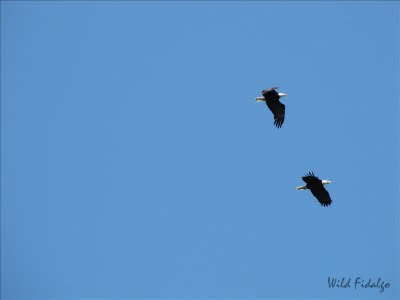Baby Pictures: Northern Flicker
Blogger's "Next Blog" link at the top of their pages makes it possible to randomly explore other Blogger sites. I always hope to discover some new nature blogs. Instead, I seem to always end up mired in other peoples' baby pictures. No offense, but it's not what I'm looking for. In response, here are some of my own. These are the fledged young of Northern Flickers ( Colaptes auratus ) caught by the Birdcam at various ages. Mom always seems to be nearby. This is a good example of what a useful tool the Birdcam really is. It catches scenes I have never seen in real life. It's nice to get these unique shots of one of my favorite birds. Northern Flickers occur in two color forms defined by the undersides of their wing and tail feathers. While I do see both pure Red-shafted and Yellow-shafted birds in the yard, most of my Flickers are Red/Yellow hybrids with orange shafts. This year's crop of chicks seems to be continuing that patte


